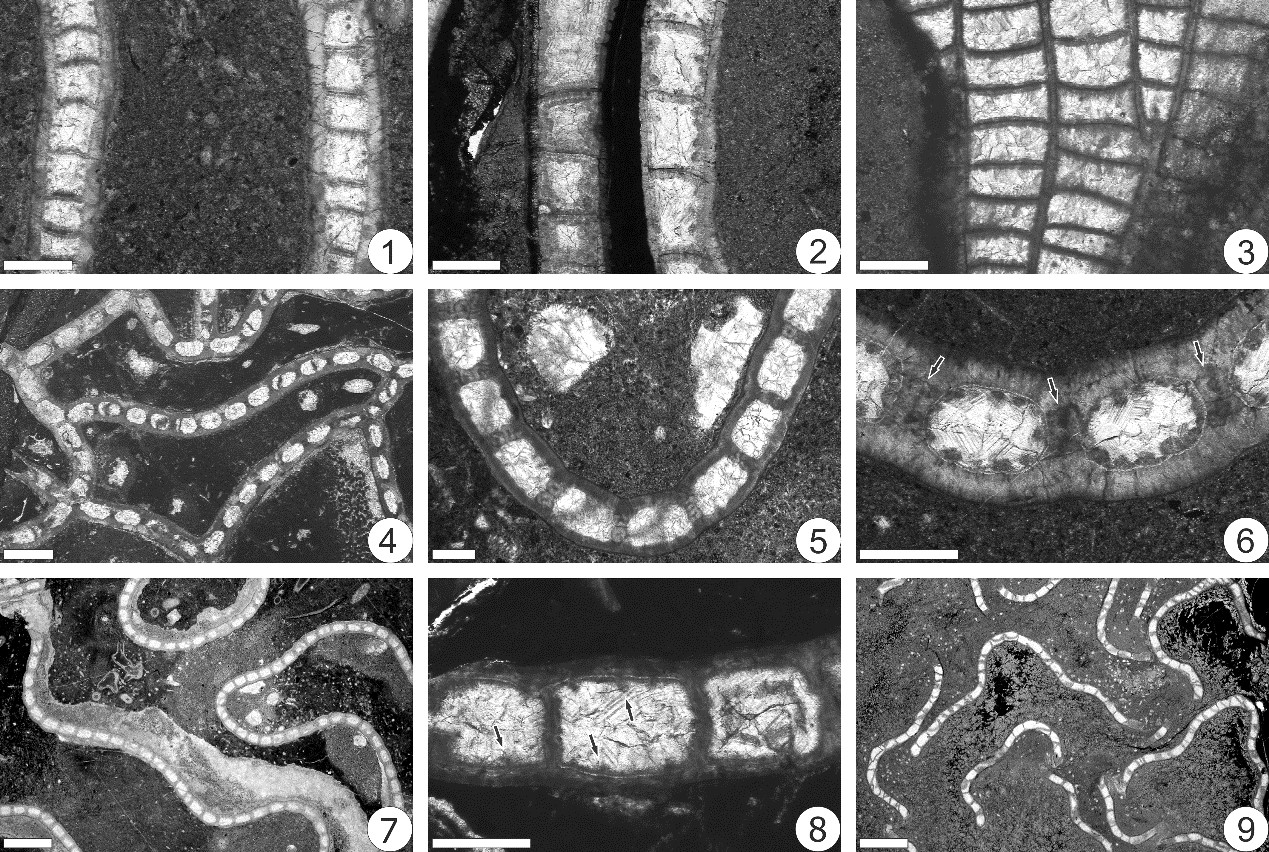
Longitudinal (1–3) and transverse (4–9) thin sections of Catenipora Lamarck, 1816 from the Xiazhen Formation at Zhuzhai, South China
Catenipora is one of the most common tabulate coral genera occurring in various lithofacies in the Upper Ordovician Xiazhen Formation at Zhuzhai in South China. A combination of traditional multivariate analysis and geometric morphometrics is applied to a large number of specimens to distinguish and identify species, by Dr. LIANG Kun from Nanjing Institute of Geology and Palaeontology, Chinese Academy of Sciences and his colleagues. Based on three major principal components extracted from 11 morphological characters, three major groups as determined by the cluster-analysis dendrogram are considered to be morphospecies. Their validity and distinctiveness are confirmed by discriminant analysis, descriptive statistics, and bivariate plots. Tabularium area and common wall thickness are the most meaningful characters to distinguish the three morphospecies. Geometric morphometrics is adopted to compare the morphospecies with types and/or figured specimens of species previously reported from the vicinity of Zhuzhai. Despite discrepancies in corallite size, principal component analysis and discriminant analysis, as well as consideration of overall morphological characteristics, indicate that the morphospecies represent C. zhejiangensis Yu in Yu et al., 1963, C. shiyangensis Lin and Chow, 1977, and C. dianbiancunensis Lin and Chow, 1977.
Catenipora occurs in seven stratigraphic intervals in the Xiazhen Formation at Zhuzhai, representing a variety of heterogeneous environments. The coralla preservation is variable due to differential compaction; coralla preserved in limestones are commonly intact and in growth position, whereas those in shales are mostly crushed or fragmentary. The size and shape of corallites are considered primarily to be species-specific characters, but are also related to the depositional environments. In all species, morphological characters including corallite size, septal development, and shape and size of lacunae show high variability in accordance with lithofacies and stratigraphic position. The intraspecific differences in corallite size at various localities in the Zhuzhai area may indicate responses to local environmental factors, but may also reflect genetic differences if there was limited connection among populations.
The study has been published on Journal of Paleontology.
Download:
